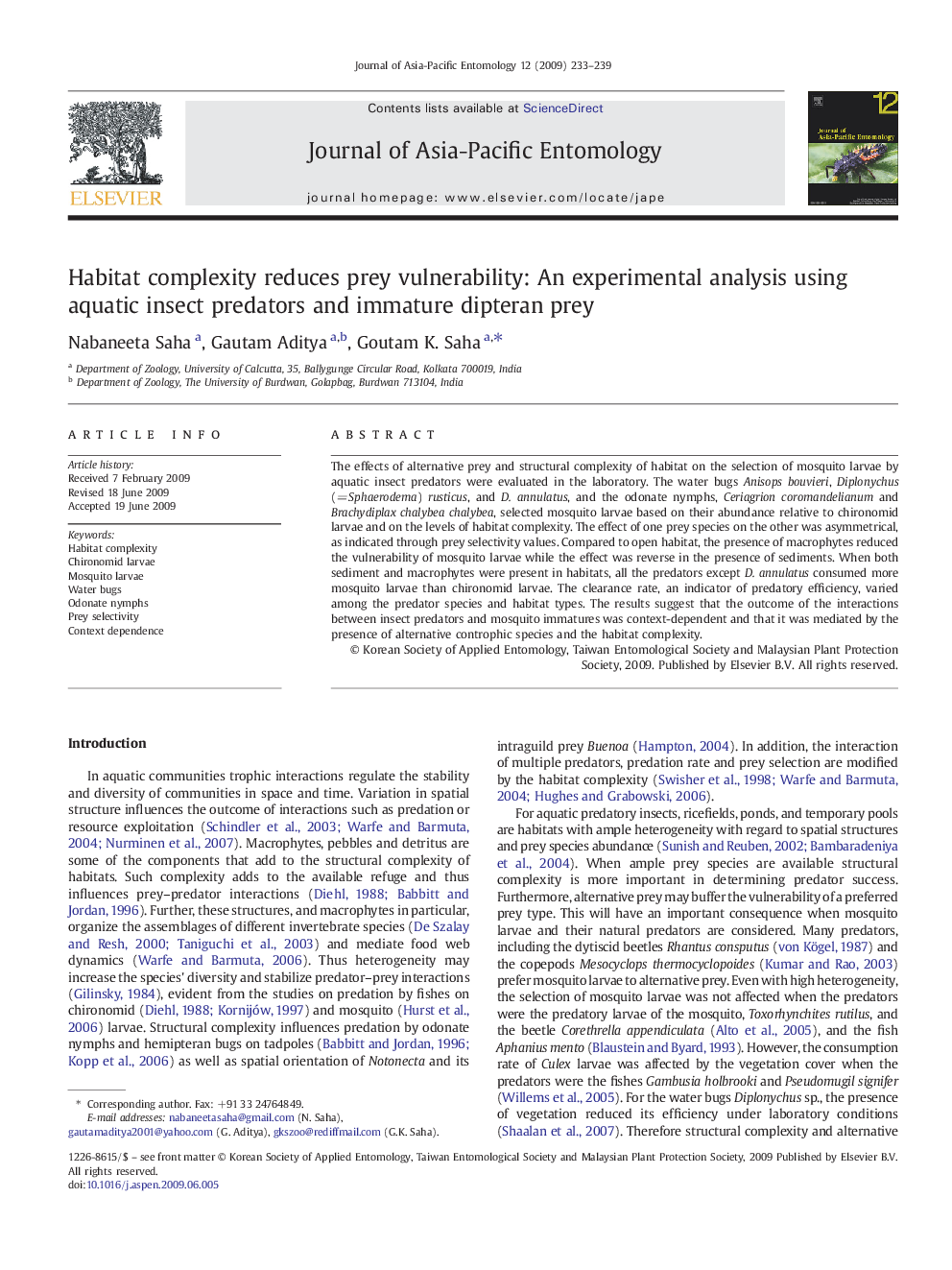| کد مقاله | کد نشریه | سال انتشار | مقاله انگلیسی | نسخه تمام متن |
|---|---|---|---|---|
| 4525040 | 1323605 | 2009 | 7 صفحه PDF | دانلود رایگان |

The effects of alternative prey and structural complexity of habitat on the selection of mosquito larvae by aquatic insect predators were evaluated in the laboratory. The water bugs Anisops bouvieri, Diplonychus (= Sphaerodema) rusticus, and D. annulatus, and the odonate nymphs, Ceriagrion coromandelianum and Brachydiplax chalybea chalybea, selected mosquito larvae based on their abundance relative to chironomid larvae and on the levels of habitat complexity. The effect of one prey species on the other was asymmetrical, as indicated through prey selectivity values. Compared to open habitat, the presence of macrophytes reduced the vulnerability of mosquito larvae while the effect was reverse in the presence of sediments. When both sediment and macrophytes were present in habitats, all the predators except D. annulatus consumed more mosquito larvae than chironomid larvae. The clearance rate, an indicator of predatory efficiency, varied among the predator species and habitat types. The results suggest that the outcome of the interactions between insect predators and mosquito immatures was context-dependent and that it was mediated by the presence of alternative controphic species and the habitat complexity.
Journal: Journal of Asia-Pacific Entomology - Volume 12, Issue 4, December 2009, Pages 233–239